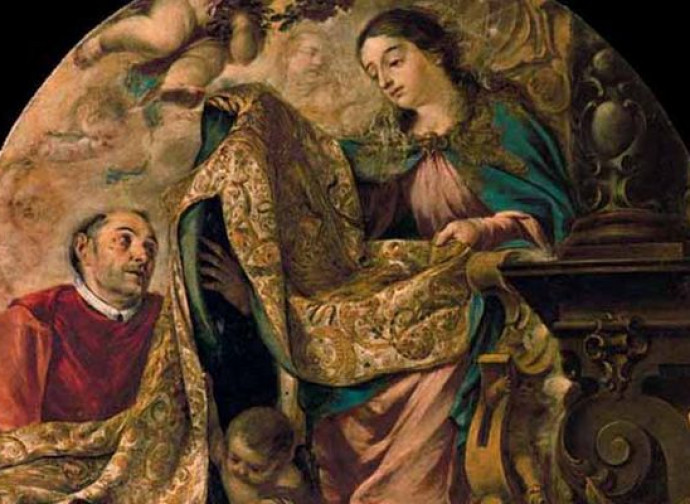Saint Ildephonsus
Saint Ildephonsus (607-667) is renowned for a number of writings, which famously include a valuable treatise on the perpetual virginity of Mary; he is even better known for his encounter with the Virgin, also recognised by the Muslims during their ruling of Spain.

Saint Ildephonsus (607-667) is renowned for a number of writings, which famously include a valuable treatise on the perpetual virginity of Mary; he is even better known for his encounter with the Virgin, also recognised by the Muslims during their ruling of Spain. Born in Toledo to a wealthy Visigothic family during the reign of Witteric, when still a child, Ildephonsus entered the then famous monastery of Agali (it no longer exists). Around the age of 25 he was consecrated deacon by the bishop Saint Eladius. He was then elected abbot and, in this capacity, participated in the 8th and 9th Councils of Toledo, while he devoted himself assiduously to writing. In 657 he was elected as a bishop and, according to the Elogium, a biography written by the contemporary Saint Julian of Toledo (642-690), was forced to accept the position by the Visigoth King Recceswinth.
He wrote a Commentary on the Knowledge of Baptism, in which the doctrine of the Fathers on this sacrament is exposed simply, starting from the creation of man and original sin, through to the difference between John's Baptism for conversion and the Baptism of Christ, and the importance of the Creed and a catechesis on the Our Father, which recommends daily Communion ("we ask in this prayer of the Our Father that this bread, Christ himself, be given to us every day"). He then wrote De progressu spiritualis deserti (On the Progress of the Spiritual Desert), where he describes the path of the soul after Baptism which, for its salvation and sanctification is called to follow Christ in the way of the Gospel, as the Israelites crossed the desert towards the Promised Land.
His most famous work, however, remains the treatise On the Virginity of Saint Mary against Three Infidels (an anonymous Jew, plus Jovinian and Helvidius, two 4th-century heretics already refuted by Saint Jerome). Here, with sound arguments he defends the perpetual virginity of Mary, which had already been defined dogmatically in the Second Council of Constantinople (553). The Marian theology of Ildephonsus (who was familiar with the works of Augustine and Isidore of Seville), had a significant impact on the Spanish people, who assimilated it to the point of habitually calling Mary just "la Virgen", the simple term used by Saint Ildephonsus who, in his writings, also insisted on addressing her as "Mother".
The miracle that took place on the night of the 18th of December 665 was part of this fervent devotion. Ildephonsus, together with some clerics and other worshippers, had gone to church to sing hymns in honour of the Virgin. The group found the chapel illuminated by such a dazzling light that everyone fled in fear, except the holy bishop and two of his deacons. Before them they saw the Madonna, surrounded by other virgins who were singing heavenly hymns. Mary nodded to Ildephonsus to come closer and, fixing her eyes on him, said: "You are my chaplain and faithful notary. Receive this chasuble which my Son sends you from his treasure." That said, the Virgin herself draped him in the sacred chasuble (the liturgical vestment of the minister who celebrates Mass), instructing him to use it only on the holidays in her honour.
The Council of Toledo stated the truthfulness of the apparition and instituted a feast day to perpetuate its memory. In the modern age, the miraculous event was included in the Acta Sanctorum and documented as "The Descent of the Most Holy Virgin and her Apparition", thus confirming an uninterrupted transmission over the centuries, despite the Islamic invasion that had begun in the 8th century. The Muslims, in fact, turned the ancient church into a mosque but, being aware of the apparition of Mary, who is venerated in the Koran, they respected the place and the stone that was there as sacred. This is the stone, protected by a grille in today's cathedral of Toledo, which the faithful can still venerate today and on which the Blessed Virgin had laid her feet when she appeared to Saint Ildephonsus.




